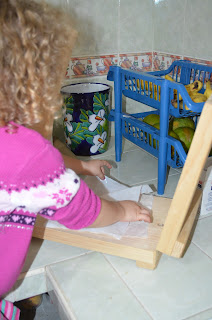From the outside, it doesn't look much different and for a small fee, tourists can step inside and observe. It is strictly forbidden to take photos inside, but how I wish we could have! There are no pews or benches because the people kneel to pray in front of candles, with a few eggs and soda. There weren't a lot of people in there when we were there, but each one had 150+ candles. The candles were mostly white, but there were some that were colored.
Why eggs? Why soda? Don't you take eggs and soda with you when you pray? In this church, the curandero, or healer, requests certain colored candles that he believes helps him to pray. We later asked at a nearby store what each color represented, but it was tough to get any answers. For one, the shop owners didn't speak much Spanish. But I also think that they didn't want to share the "mysticism" with outsiders. We did learn that the white candle represented peace. The yellow was for illnesses, such as headaches. Green was for the harvest. Black was for something bad.
The eggs are for cleaning. An egg is waved over a person to heal them of an illness, or cleanse them from evil.
The soda is used as an offering to the spirits. It originally was sugar cane water, before soda became so prevalent.
We did not take this picture, but found it on the internet. The floor is covered in pine needles, and you can see all of the candles.
I mentioned that taking pictures is strictly forbidden. There are "security forces" present inside and outside of the church. The Mexican police do not enter this community, so there is a vigilante "justice" of sorts. They carry billy clubs and walky talkies...and you could be imprisoned for taking pictures inside of the church.
And the Chamula jail is not a pretty place...
Our visit to San Juan Chamula was very eye-opening. We had heard a lot about this community, and we have studied syncretism, the combination of different forms of belief or practice. It is amazing to see the combination of pre-hispanic beliefs mixed so blatantly with Roman Catholicism. There is an obvious lack of the presence of Jesus in this belief system, and again we are reminded why God has sent us to Southern Mexico.







